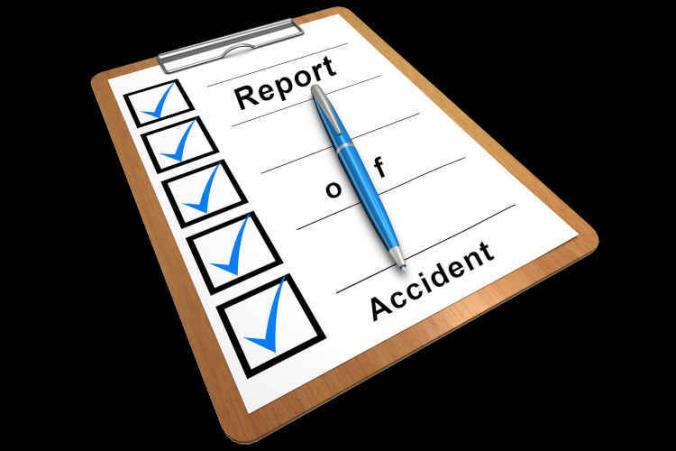If you suffer an injury at work or develop an occupational disease, you need to file a claim right away. The best way to file an L&I claim is to see a doctor. There, you will fill out a Report of Accident (ROA) form. You must complete the ROA form to file the claim.
Filling the Report of Accident form
The Report of Accident form is long. It asks for a lot of information. Many workers rush when they complete the form. They end up giving inaccurate or incomplete information. This can cause a lot of problems and delays down the road. Therefore, it’s important to take your time. You must fill out the form completely and accurately.
The ROA form has 2 main sections. The first is Worker & Employer information. The second is for Health Care Provider information. Your doctor fills out the Health Care Provider section. You don’t need to worry about that part. However, you must fill all 43 boxes of the Worker and Employer section.
Sections in the ROA form
The first 9 boxes ask for basic information. For example, your full legal name, gender, and social security number. It also asks for your phone number, birth date, and home address. Also, you’ll need to provide your height, weight, and mailing address.
If you don’t have a social security number – it’s okay to leave it blank. Make sure your address and phone number are correct. This is how the Department of Labor and Industries (L&I) communicates with you. L&I will send you important documents and information over time. Hence, it’s critical to provide accurate contact details. If your contact info changes, you must notify L&I right away.
Answering questions about your family
Next, there are boxes 10 and 12. Box number 10 is small. Many work injury claimants overlook it. However, it’s a very important box because it asks about marital status. Are you married? Do you have a registered domestic partner? If so, then you can potentially receive higher time-loss compensation payments. To get a time-loss compensation increase, you must fill out box #10. You must also include the name of your spouse or domestic partner in box 12.
Box #11 and box #13 ask about dependent children. Usually, they refer to biological or legally dependent children. Kids must be under the age of 18 and living at home. Sometimes, L&I will consider children over 18 under certain requirements. If you have dependent children, you might be eligible to higher time-loss compensation. To get the increase, you must list all dependents on this form. Otherwise, L&I won’t take them into consideration when they calculate your payments. Box 13 asks for the full legal name of the children’s legal guardian (if it isn’t you).
Work injury details in the Report of Accident form
L&I asks you to describe the work accident or workplace illness in boxes 14 through 28. They use this information and the initial medical records to allow or reject your claim. It’s critical that you fill these boxes completely and accurately. Don’t guess anything. Especially not important dates. Look at your calendar and text messages if you have to. Go back and review your emails. Talk to friends and family members. It’s imperative that you enter the correct facts.
Employer and wage information
In boxes 29-39, L&I asks for your employer and salary info. L&I uses this data to calculate your wage replacement benefits and payments. Of course, L&I will verify the information with your employer. If you don’t fill boxes 29-39, it might cause delays with your payments.
Box 29 asks if your employer pays your healthcare benefits. If you get any healthcare coverage through your job, then you must check “Yes”. Even if it’s through union agreements or a partial health coverage. If your employer stops your healthcare coverage after your work injury, L&I still includes the value of the healthcare benefits when calculating your compensation rate.
Your employer info goes into boxes 30-34. L&I has to communicate with your employer. You must fill the employer info accurately because it reduces delays in claim processing. In box 35, list your job title at the time of injury. Boxes 36-39 ask for your rate of pay, hours per day, and days per week. They also want to know about all your sources of work income. For example, earnings from piecework, tips, overtime, commissions, and bonuses. Some workers have a complex pay schedule. In those cases, you must collect pay stubs for up to 12 months prior to the injury. Give them to L&I. It’ll help them calculate your wage rate. You can also do it later. In fact, you can send them paystubs after you file the initial ROA form.
Other details in the Report of Accident form
Some people work more than one job. If you suffer an injury at work, you must tell L&I about all your jobs. You’ll do it in box 40 and 41. They must consider all income sources to calculate your benefits. For instance, say you’re unable to perform all your jobs. In that case, L&I will compensate you for all your earnings from all jobs. Not just the job of injury. There are also other considerations with occupational disease claims. For example, L&I needs to know if there are work activities with other employers that contribute to your condition.
Finally, date your Report of Accident form and sign it in box #42. Then, after you sign it, return it to your medical provider. Your doctor will submit the Report of Accident to L&I.
What else should I do when filing a claim?
When you file your claim, there are other steps you must follow:
1. Look at the top right corner of the Report of Accident form. You’ll see your claim number. It’s pre-printed on the form. It begins with two letters with five numbers after. Next, take a picture or write down your claim number. Keep it safe. Sometimes, paperwork can get lost. Having your claim number is the easiest way to check the status of your L&I claim.
2. Give L&I access to your employment records. The Employment Securities Department (ESD) maintains your records. These records can help L&I calculate your wages and benefits.
3. Don’t hesitate to call L&I at the Injured Worker Hotline. In fact, you can call them any time you need help. The L&I Hotline number is 1-800-547-8367.
Attorneys cannot help until you file a claim
Most attorneys can’t help you until you file your claim. However, they can help after you file the L&I claim. For example, if you have issues with claim allowance or wage rate, then it’s important consult with an L&I attorney. L&I can calculate your wages in several ways. A workers’ compensation attorney can help determine if the calculation methods are appropriate. Or, if they used the method most beneficial to you. Attorneys can also help if L&I denies or rejects your claim.


